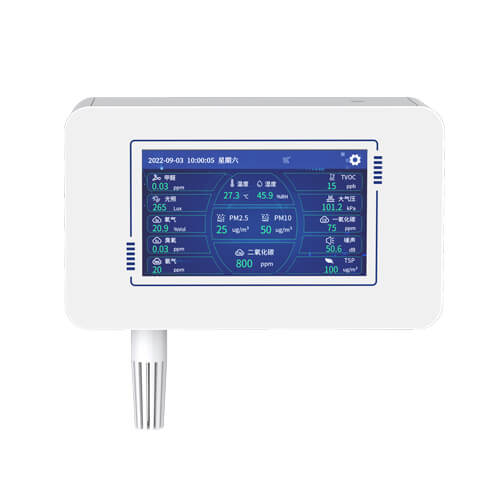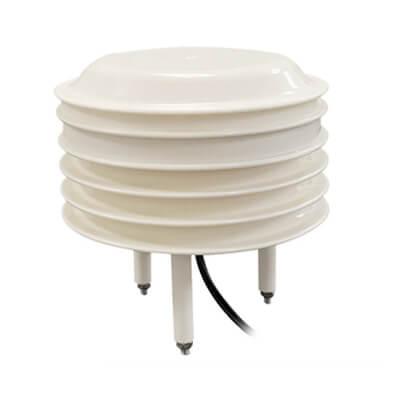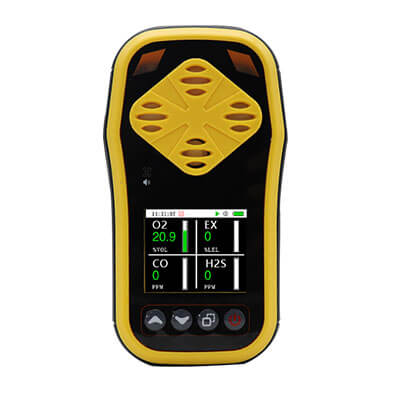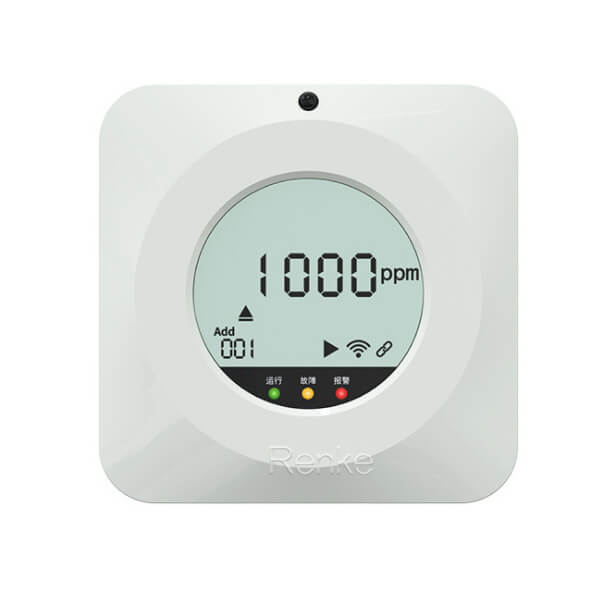What is air quality sensor?
An air quality sensor is a device used to detect the concentration of pollutants in the air. It can usually measure two or more air quality indicators such as temperature, humidity, carbon dioxide, carbon monoxide, ozone, formaldehyde, benzene, PM2.5, PM10, etc. It is an important part of the air purifier and fresh air system.
What do air quality sensors measure?
Air quality sensors can usually measure particulate matter (such as pm1,pm2.5, pm10), various gases (such as ozone, carbon monoxide, carbon dioxide, methane, formaldehyde, tvoc, etc.) and some environmental indicators (such as: temperature, humidity, uv, illumination, etc.)
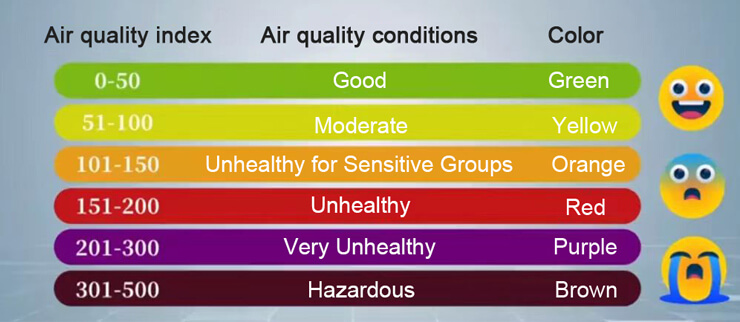
How does an air quality sensor work?
The air quality sensor working principle is to detect gas and particulate matter indicators in the air through optical, electrical, thermal and other methods. For example, the laser scattering principle is used to detect the concentration of particulate matter such as PM2.5 and PM10 in the air, the NDIR non-dispersive infrared principle is used to measure the concentration of carbon dioxide gas in the air, and the electrochemical principle is used to measure the concentration of ozone gas in the air.
Place the air quality sensor in the measurement area, and the sensor will automatically collect pollutant data and transmit the data to the data processor for processing. The data processor can convert the data into visual charts or numbers to let users understand the air quality situation.
Types of air quality sensors
Below is some air quality sensors from Renke
Depending on the indicators that need to be measured, there are single air quality sensors and multi-functional air quality sensors. According to different environments of use, they are divided into indoor air quality sensors and outdoor air quality sensors. Next, I will introduce several indoor air quality sensors and outdoor air quality sensors to you respectively.
Indoor air quality sensor
The air quality sensor is a typical indoor air quality monitoring device. Can measure PM2.5, VOCs, and formaldehyde (HCHO), and calculate the Air Quality Index (AQI). With its compact size, it can be placed on a table or bedside table. And the operation is also very simple. Click the switch button to turn on the device and it can be used normally. Click the button a few more times to read the values cyclically. The screen is clear and intuitive. Its simple operation, high practicality, and high cost performance allow it to have good sales on large platforms such as Amazon.
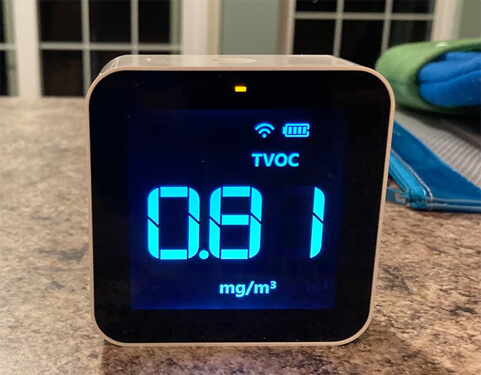
But with no Wi-Fi connection and no app, the M10 won’t track its readings over time, it won’t provide outdoor air quality data from nearby weather stations, and it won’t give you advice on how to improve the air quality. Recommended, of course, it also doesn’t let you check air quality on your phone. If this sounds simple, you might like it.
2. PM air quality sensor for workshop
This PM air quality sensor is a device used to measure particulate matter such as PM1.0, PM2.5 and PM10. It is wall-mounted and is mainly used in industrial production plants. Compared with other air quality sensors, its advantage is that the sensor is completely wrapped in a waterproof and dustproof shell, so it will not be affected by water vapor or smoke in the air. The filter element on the surface can ensure the normal passage of particulate matter such as PM and keep water vapor and dust out. Because of the pursuit of excellent waterproof and dustproof effects, it does not have a screen display function and cannot read data directly. Data can only be viewed by logging into the software platform.
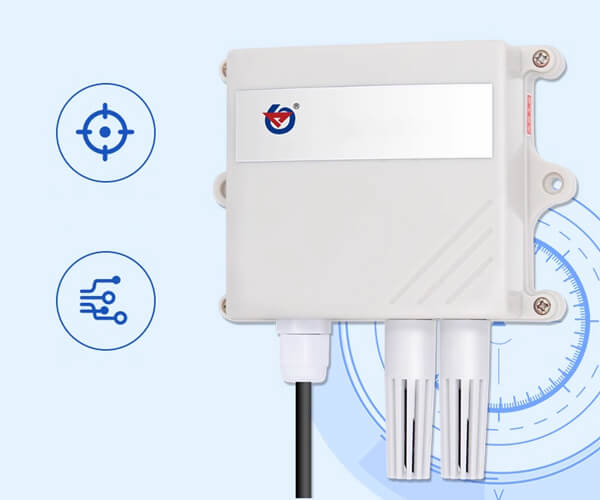
RS-PM-*-2 is an industrial-grade particle sensor that uses the principle of laser scattering measurement. Through the unique data dual-frequency acquisition technology, the number of particles of the same particle size in the unit volume is obtained, and the mass concentration of the particles of the equivalent particle size in the unit volume is scientifically calculated. The measurement results are output via ModBus-RTU protocol. Compared with wireless signal output such as wifi, it has stronger anti-interference ability.
3. Multifunctional air quality sensor for building
The multifunctional gas sensor is a circular device with a diameter of 168mm. The device and the base are snap-connected and can be installed on the wall or on the ceiling. The shell is made of ABS material, which is sturdy and durable. The compact appearance makes it less demanding on the installation environment and can be used in more scenarios. Except for TVOC, which uses an epitaxial probe, the other probes are built-in probes. This air quality sensor is powerful and can simultaneously measure CO2, temperature, humidity, PM2.5, PM10, atmospheric pressure, light, TVOC, formaldehyde, O3, CO, CH4, O2, SO2, NO2, H2, H2S, NH3, etc. Various environmental indicators. It can meet the monitoring requirements of various public places. The only drawback of this device in my opinion is the lack of a display and the inability to read data directly from the device.
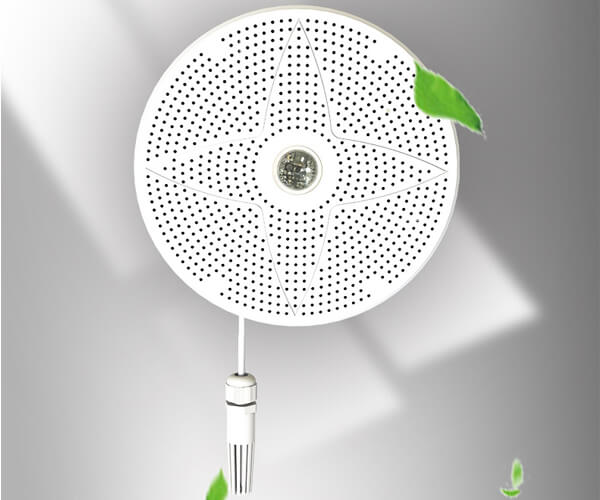
This device uses imported sensors and control chips, giving it higher resolution and better stability. During use, people can choose 485 output or wifi wireless transmission according to the use environment. The RS485 type can transmit 2000 meters, and the indoor environment data can be viewed through the monitoring platform. The WIFI type requires the help of the on-site network to achieve networking. USB driver-free configuration of device parameters requires only one USB data cable on site.
4. Composite air quality sensor for office
This composite air quality sensor is an upgraded version of the multi-functional air quality sensor. It can not only measure temperature, humidity, PM2.5, PM10, atmospheric pressure, light, TVOC, CO2, formaldehyde, O3, CO, CH4, O2, SO2, NO2, H2, H2S, NH3 and other environmental indicators. It also adds a 4.3-inch large-screen LCD display and touch screen function, which can not only obtain values directly through the device but also manually set various functions. Very suitable for use in offices, schools, supermarkets and other places.
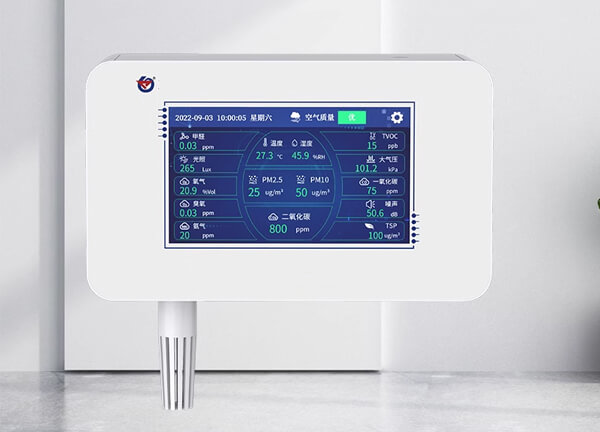
When the concentration of one or more detected gases exceeds the safe range, the monitoring page will alert us by turning red, and at the same time send email alarms, text messages, and phone calls so that timely solutions can be taken. Composite air quality sensors can conduct 24-hour online monitoring of multiple elements in the air environment to ensure air health and improve urban air quality. I think this is the best air quality sensor.
Outdoor air quality sensor
1. Multi gas solar radiation shield
This multi-gas air quality sensor places multiple gas sensors in a solar radiation shield to detect TVOC, CH2O, O3, oxygen, H2S, methane, carbon monoxide, nitrogen dioxide (NO2), sulfur dioxide (SO2), and hydrogen. (H2), ammonia and other environmental elements are monitored. After being processed by the internal microprocessor, the data is output as an RS485 signal for users to view in real time. The solar radiation shield ensures that the sensor can work outdoors for a long time with its excellent waterproof and dustproof function.
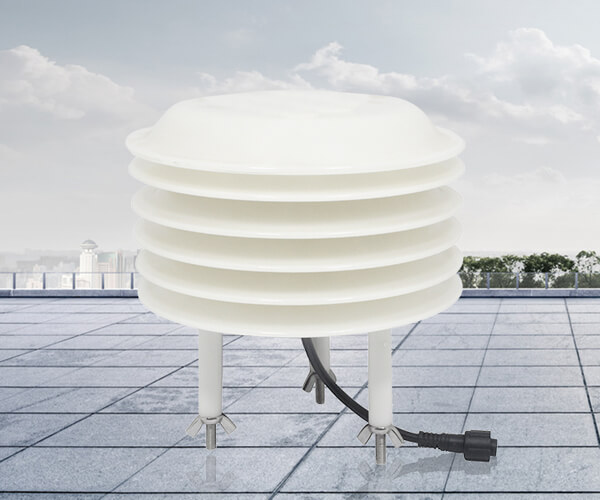
RS-MG-*-1-N01-BHY is made of high-quality anti-UV material, which avoids the increase in temperature caused by direct sunlight from affecting the measurement of the sensor when used outdoors. It can be installed at the sewage outlets of various high-pollution or high-energy-consuming enterprises for monitoring to reduce the emission of polluting gases.
2. Dust monitoring equipment
The dust monitoring system is not a single sensor, but a complete system composed of a monitoring unit, a data processing unit, a data transmission unit, a display unit and a video character overlay unit. It includes hardware and software parts. Hardware refers to various sensors and controllers that can collect environmental data and upload it to the software. The software refers to a visualization platform that allows staff to monitor on-site environmental data in real-time 24 hours a day.
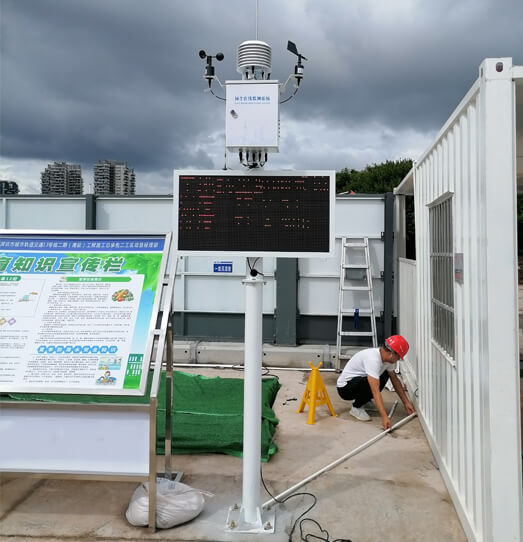
Dust monitoring systems are generally used in buildings and construction areas to monitor PM2.5, PM10, noise, wind speed, wind direction, wind force, atmospheric pressure, air temperature and humidity, TSP and other air indicators. Monitoring data can be displayed directly through the LED screen, or remotely viewed through the PC and app login platform. Compared with a single air quality sensor, the installation and deployment of a dust detection system is more troublesome, but its service life and monitoring effect will also satisfy users.
What are the advantages of air quality sensors?
- Keep healthy
The most direct advantage of air quality sensors is to help you create a healthy living environment. It can not only monitor indoor air conditions in real time and remind you to open windows for ventilation in time, but also provide you with outdoor air quality conditions when you are about to go out. So that you are fully prepared and protected. - Multi-function
There are many types of air quality sensors on the market today. Users can choose one or more air indicators to monitor. Moreover, some manufacturers can also provide customized services and add monitoring indicators according to the user’s usage environment. - Easy to use
Most air quality sensors are simple to install. For indoor use air quality sensor, you only need to turn on the device and successfully connect the device to your mobile phone and computer. For industrial use air quality sensor, equipment in different locations needs to be connected to the monitoring host through wiring to achieve multi-point monitoring. - Wide range
At present, air quality sensor is no longer limited to monitoring PM2.5 and PM10 in the air. It can detect various common pollutants in indoor air, such as PM2.5, PM10, formaldehyde, VOCs, etc. It can even detect air environment parameters such as temperature, humidity, air pressure, etc., with a wide detection range. - High precision
With the continuous development of technology, the measurement units of air quality sensors are also constantly upgraded, and the measurement accuracy is getting higher and higher. Even low concentrations of harmful gases can be accurately detected.



